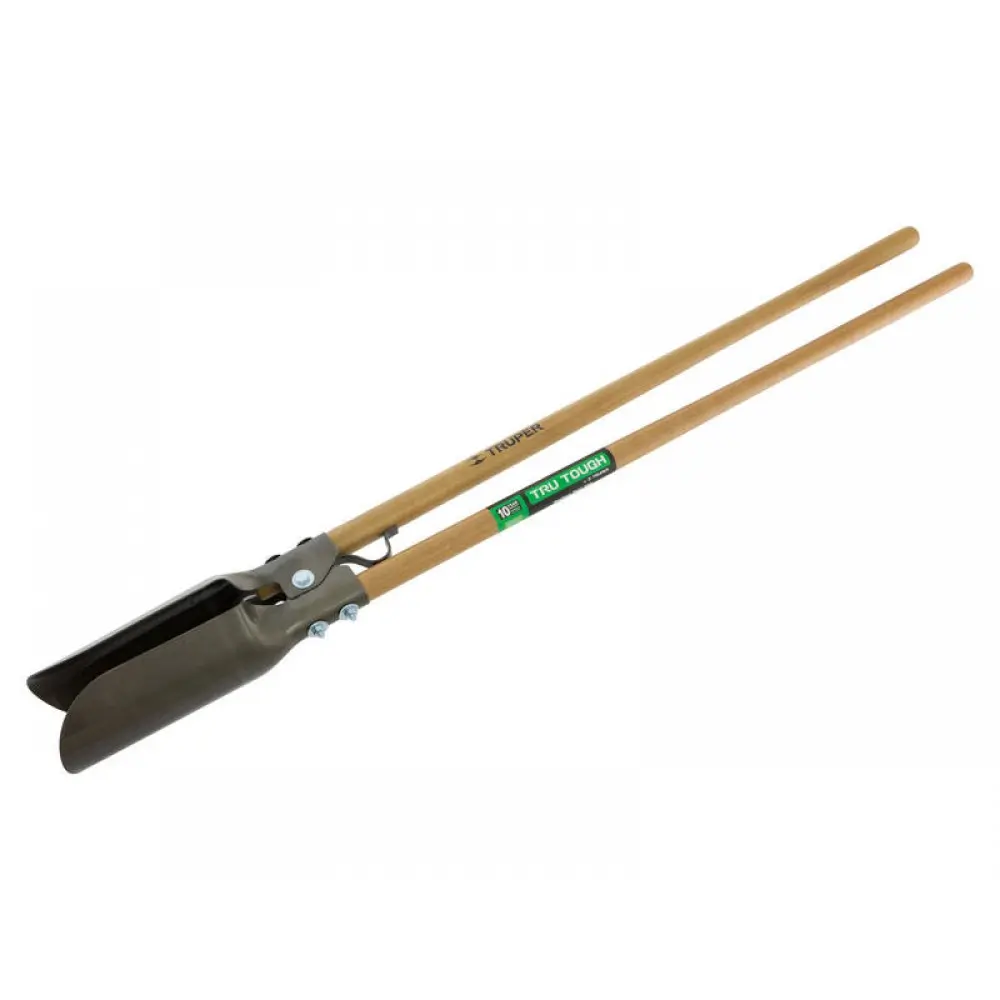How to Use a Post Hole Digger: A Comprehensive Guide
Introduction
Digging post holes is an essential part of various outdoor projects, from fencing and decking to planting trees and shrubs. To ensure your job is done efficiently and effectively, it’s crucial to use the right tool for the job. In this comprehensive guide, I will share my expertise on using post hole diggers, discussing the different types available and helping you choose the best one for your specific project.
Choosing the Right Post Hole Digger
Manual Post Hole Diggers

Manual post hole diggers are ideal for small-scale projects. They require physical effort but offer precise control. These diggers are perfect for tasks like planting shrubs or small fence installations.
Gas-Powered Post Hole Diggers

Gas-powered diggers are more powerful and suited for larger projects. They can handle a variety of soil conditions and are excellent for digging deeper holes, making them a good choice for deck or tree planting jobs.
Hydraulic Post Hole Diggers

Hydraulic post hole diggers are heavy-duty tools, typically used in commercial or large-scale landscaping projects. They offer power and precision, making them suitable for challenging terrains.
Electric Post Hole Diggers

Electric post hole diggers are a great option for small to medium-sized jobs. They are easy to handle and environmentally friendly, but may not be as powerful as gas or hydraulic diggers.
Safety Precautions
Personal Protective Equipment
Before starting any digging project, ensure you’re equipped with safety gear such as gloves, eye protection, and appropriate clothing.
Check for Utility Lines
Always contact your local utility company to locate any underground lines before digging to avoid potential hazards.
Soil Conditions
Understanding your soil type and conditions is essential. Soft, loose soil is easier to dig, while rocky or compacted soil may require more effort and the right digger type.
Preparing the Work Area
Marking Hole Locations
Mark your hole locations accurately, using stakes or string to maintain consistency.
Clearing the Area
Remove any obstacles like rocks or debris that could obstruct the digger’s path.
Adjusting Digger Depth
Set the digger’s depth according to your project’s specifications, ensuring the holes are uniform.
Stay tuned as we explore the detailed usage of each type of post hole digger and provide expert tips for efficient post hole digging.
Using a Manual Post Hole Digger
Proper Technique
- Hold the handles firmly and thrust the blades into the ground.
- Use your legs to provide power while keeping your back straight to avoid strain.
- Pull the handles apart to remove soil, then repeat the process.
Digging in Challenging Soils
If you encounter hard or rocky soil, water the area before digging. It’ll make the job easier and prevent excessive strain.
Advantages and Limitations
Manual post hole diggers are affordable and great for small tasks. However, they may not be suitable for extensive projects due to the physical effort required.
Using a Gas-Powered Post Hole Digger
Starting and Operating
- Start the engine and let it warm up.
- Position the auger over the hole location.
- Gradually lower the auger, allowing it to dig into the ground.
Navigating Rocky or Hard Soil
Gas-powered diggers excel in challenging conditions. For rocky soil, use a rock bit, and for hard soil, apply water or purchase a soil auger.
Benefits and Drawbacks
These diggers are efficient for large projects but can be noisy and require regular maintenance.
Using a Hydraulic Post Hole Digger
Setting Up and Operating
- Connect the digger to a hydraulic power source.
- Position the auger and start the hydraulic system.
- Let the auger do the work as it digs the hole.
Ideal for Heavy-Duty Projects
Hydraulic diggers are powerful and best suited for demanding jobs like commercial landscaping or farm projects.
Hydraulic vs. Gas-Powered Diggers
Gas-powered diggers provide less power and precision, yet they do not necessitate extra equipment and expertise.
Using an Electric Post Hole Digger
Electric Digger Features
Electric diggers are easy to handle and have a quieter operation. They are eco-friendly and suitable for residential projects.
Suitable for Smaller Projects
These diggers are perfect for small to medium-sized jobs like planting trees or installing a small fence.
Electric vs. Manual Diggers
Electric diggers offer convenience and are less physically demanding than manual diggers but may not handle tough soils as well.
Maintaining Your Post Hole Digger
Cleaning and Lubricating
After each use, clean off dirt and debris, and lubricate moving parts to prevent rust and maintain smooth operation.
Storing the Digger
Store your digger in a dry, sheltered area to protect it from the elements and ensure longevity.
Sharpening Blades
Regularly sharpen the digger’s blades to maintain their efficiency and make digging easier.
Comparing Post Hole Digger Types
Factors to Consider
Consider factors like project size, soil type, and your physical ability when choosing the right digger.
Project Specifics
Different types of post hole diggers are better suited for various projects. Matching your digger to your specific needs is essential for success.
Top Picks: Choosing the Right Post Hole Digger for Your Project
Fencing Projects
For small fencing projects, a manual or electric post hole digger should suffice. Gas-powered diggers are suitable for extensive fencing jobs.
Deck Construction
Gas-powered or hydraulic diggers are the best choices for deck construction, as they handle the depth and workload effectively.
Planting Trees and Shrubs
Electric diggers are ideal for planting trees and shrubs, providing the right balance of power and precision.
Large Scale Landscaping
When tackling extensive landscaping projects, hydraulic diggers are your best bet due to their power and efficiency.
Expert Tips for Efficient Post Hole Digging
Consistency is Key
Maintain consistent hole spacing and depth to ensure a neat and professional result.
Avoiding Overexertion
If you’re using a manual digger, take breaks and don’t overexert yourself. Pace your work to avoid fatigue.
Proper Maintenance
Regularly maintain your post hole digger to ensure it stays in good working condition.
Troubleshooting Common Issues
Stuck Auger
If the auger gets stuck, reverse it, remove any debris, and try again.
Engine Troubles
For gas-powered or hydraulic diggers, ensure the engine is properly maintained to avoid breakdowns.
Uneven Hole Depth
Pay close attention to your digger’s depth adjustment to prevent inconsistent hole depths.
Safety First: Knowing When to Seek Professional Help
Recognizing Complex Projects
If you’re unsure about your project’s complexity, seek professional help to avoid potential issues.
The Importance of Experience
For projects involving heavy machinery or complex conditions, it’s best to hire an experienced operator for safety and efficiency.
Conclusion
Mastering the use of post hole diggers is crucial for any outdoor project. By understanding the different types of diggers and their applications, you can choose the right tool for the job, ensuring your project’s success.
Frequently Asked Questions
Q1. What type of post hole digger is best for a small garden?
For a small garden, an electric or manual post hole digger is a good choice, depending on your preferences and physical abilities.
Q2. Can I use a manual post hole digger for a large fencing project?
While it’s possible, using a gas-powered or hydraulic digger for a large fencing project will save you time and effort.
Q3. What’s the average depth for post holes?
The average depth for post holes is typically around 2 to 3 feet, but it varies depending on your project’s requirements.
Q4. How do I store my post hole digger during the winter?
Store your post hole digger in a dry, sheltered area, and make sure it’s clean and lubricated to prevent rust.
A5. Are electric post hole diggers suitable for rocky soils?
Electric post hole diggers can handle some rocky soils, but for extremely tough conditions, it’s best to opt for a gas-powered or hydraulic digger.
Summary
In this comprehensive guide on “How to Use a Post Hole Digger,” we explore various aspects of these essential tools. We begin by discussing the four main types of post hole diggers, from manual to hydraulic options, and their respective applications. Safety precautions and proper work area preparation are emphasized to ensure smooth operation. Detailed instructions on using each type of digger are provided, including tips for efficient digging and common troubleshooting. The guide concludes by helping readers choose the most suitable digger for their specific project, depending on factors like size and soil type. Whether it’s for fencing, deck construction, tree planting, or large-scale landscaping, this guide offers expert advice to master the art of post hole digging and maintain the equipment. With the right knowledge and tools, your outdoor projects can be completed efficiently and safely. Happy Post Hole Digging!




